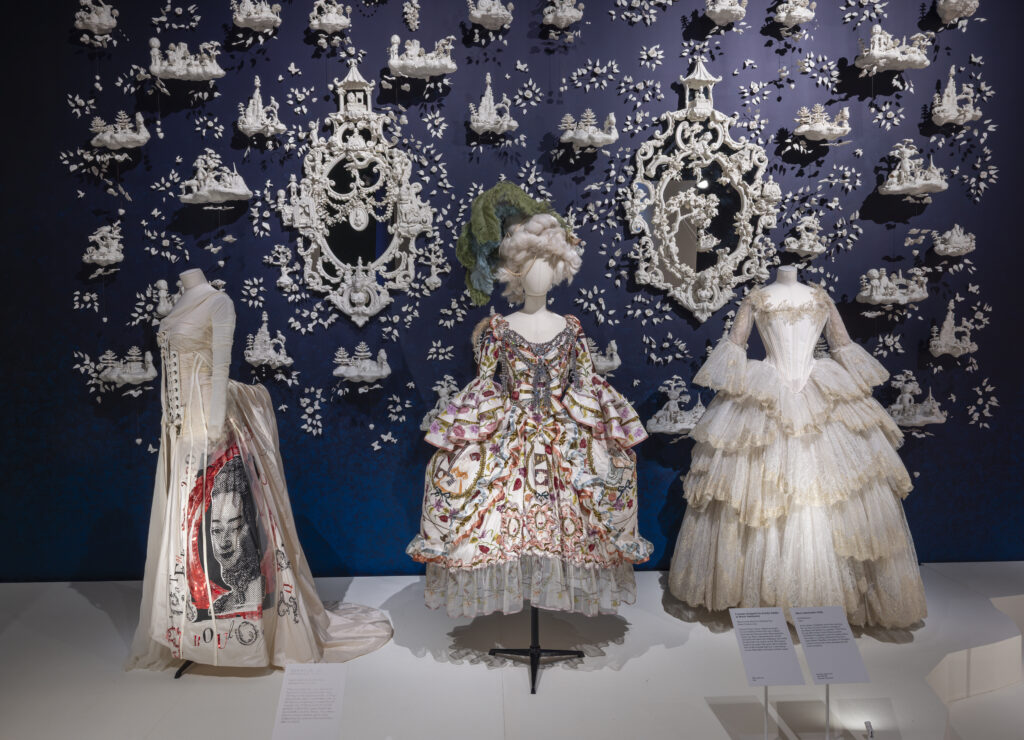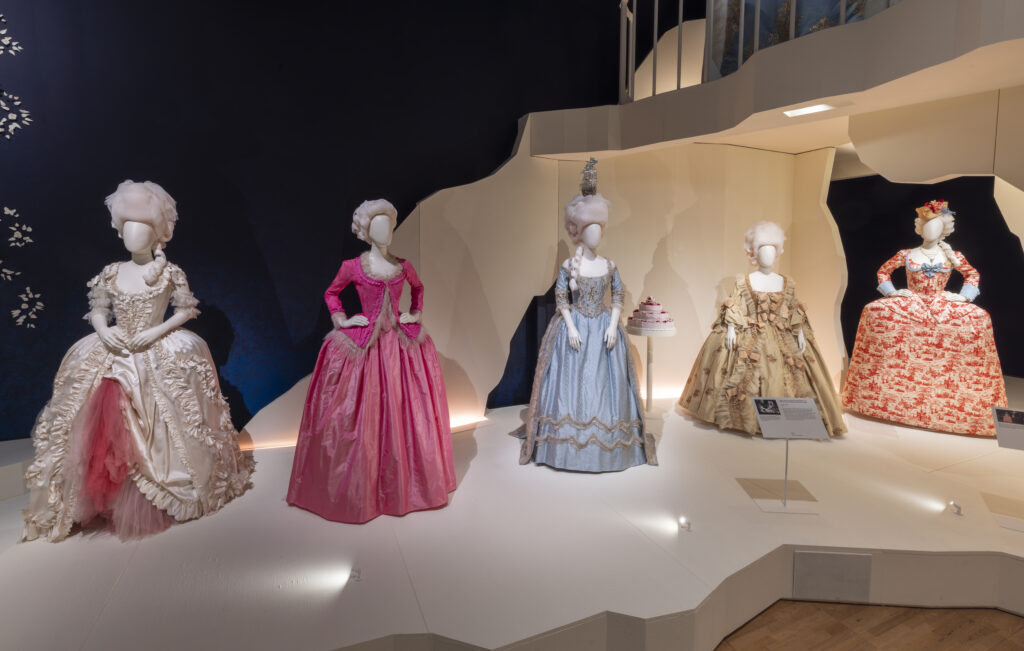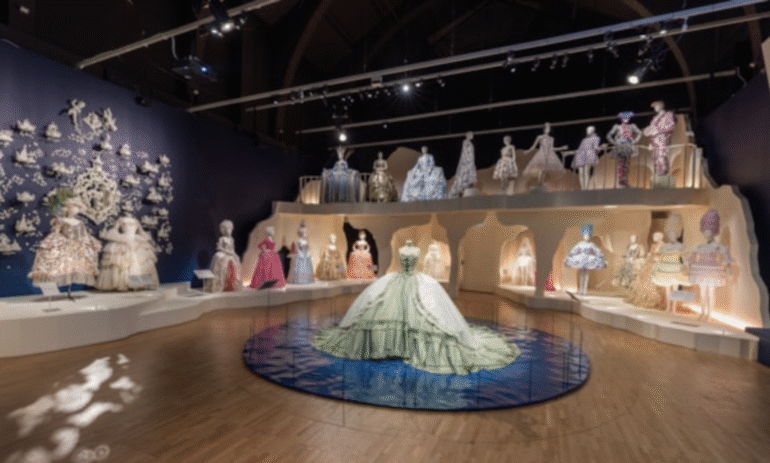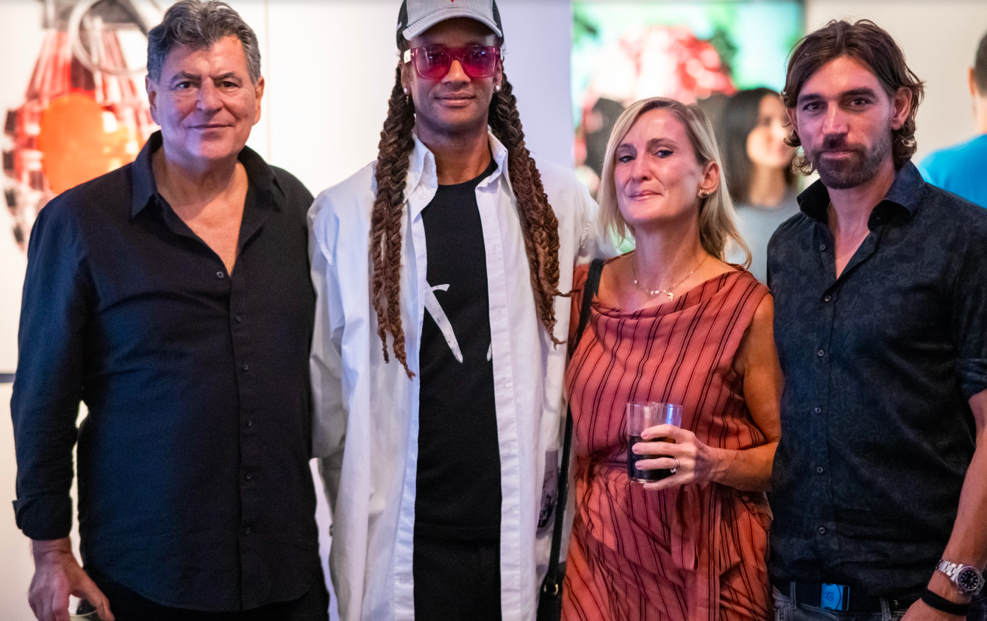By Frances Forbes-Carbines
Those who downplay the significance of fashion and visual culture in late eighteenth-century France ought to reconsider their position. It is claimed, perhaps apocryphally, that the very first sign of the French Revolution was not, as one might think, the rioting of the sans-culottes, nor some great public proclamation, but instead that a lowly courtier showed up to work in the court of Versailles one morning without silver buckles on his shoes, eschewing the unwritten rules of court dress in favour of the sartorial identifiers of the revolutionaries: plain copper buckles. In a country where at the time, literacy rates were no higher than 47% for men and 27% for women, fashion and art on public display were heavily coded: clothes could be wearable propaganda, and paintings, pamphlets and the periodical press could be potent visual signifiers.
It is with this sentiment of respect for the visual arts and craftsmanship of the eighteenth-century that a major new exhibition at the V&A titled Marie Antoinette Style is presented to the public: Marie Antoinette is–over 200 years after her death–still a style icon known for her exquisite if lavish tastes, and the exhibition offers the chance to see artefacts and objects from the time of the last French queen. The show conveys a sense of intimacy: yes, there are the grand portraits by Louise Élisabeth Vigée Le Brun and Adolf Ulrik von Wertmuller, but more poignantly there are the tiny beaded shoes that Marie Antoinette once wore; there is the last handwritten note she ever wrote, being a desperate prayer to God and a cry of anguish at the fate of her children in the wake of her forthcoming execution.
The exhibition opens with a rose pink chamber: we are greeted by an early portrait of the queen by her favourite artist, Élisabeth Vigée Le Brun: Marie Antoinette, the picture of wide-eyed youth with bows and silk attire. Wonders await through the next door, as we enter a large and magnificent space, mirrored from floor to ceiling, with lighting evocation of chandeliers, and silk dresses presented in so elegant a fashion that if you narrow your eyes you can well imagine that the robes are inhabited by ladies swirling their way across the sprung floorboards at a masked ball. I noticed that the mannequins used were much smaller than those used in shops, say, or in other exhibitions I’ve seen: their waists must have been about 18-inches small, and they can’t have been taller than five foot two. This adds an air of authenticity to the scene, one that transports you from South Kensington to the Versailles of the ancien régime.

The glitz and glamour was, of course, short lived. The extravagance and the administrative mismanagement had blown the budget. By the summer of 1787, Marie Antoinette was derisively called Madame Deficit by disgruntled nobles, who were aghast at the curtailment of court extravagance such as the 173 posts eliminated in the Queen’s household. As biographer Antonia Fraser writes, the need for proper taxation, “falling on the aristocracy (hitherto exempt), and a proper administrative system to carry it out, was as acute as ever.”
If the dresses, fans and finery of the exhibition seem saccharine, the next room leaves a sobering note – the custody and death of the Queen. Her demise is foreshadowed cleverly in the exhibition earlier on, when in the section devoted to scents a recreation is presented of the smell of Marie Antoinette’s custodial cell at the Conciergerie, where she was imprisoned in 1793: you approach a harmless-seeming faux marble bust and smell it: it is infused with the smell of mildew, cold stone, sewage and the polluted Seine. It is unsettling and unnerving; it feels almost claustrophobic. The exhibition room that follows is the most affecting: a hexagonal, dim chamber, it features sketches of the Queen’s imprisonment and death, the final note she ever wrote in her prayer book, the guillotine blade with which she was killed and a medallion containing locks of her hair.
However, the exhibition does not end there – and I am glad of it. We are treated to several rooms of Marie Antoinette’s style legacy thereafter, with highlights including John Galliano’s Marie Antoinette-inspired Dior couture pieces, Maria Grazia Chiuri’s custom Dior couture for the BBC’s Marie Antoinette and an artwork by Beth Katleman entitled “Marie Antoinette’s Folly”. Shoes inspired by the late queen are on display: some are historic while some are made by the exhibition’s sponsor, Manolo Blahnik. Everyone in the final room was mesmerised: so much craftsmanship, colour and style, each object worthy of deep contemplation.
Equally I am glad that the exhibition, quite unlike Sofia Coppola’s film of the same subject, does not evade the difficult conversations around the later life of Marie Antoinette (Coppola’s film has a strong focus on aesthetics, and sanitises the Terror): we are shown all of the Queen’s life, even the parts which are hard to stomach but that we, out of respect both to her memory and her legacy as a style icon and patron of the arts, ought to acknowledge.
Marie Antoinette Style is at the V&A South Kensington from 20th September 2025 until 22 March 2026. For more information and ticket visit: https://www.vam.ac.uk/exhibitions/marie-antoinette




